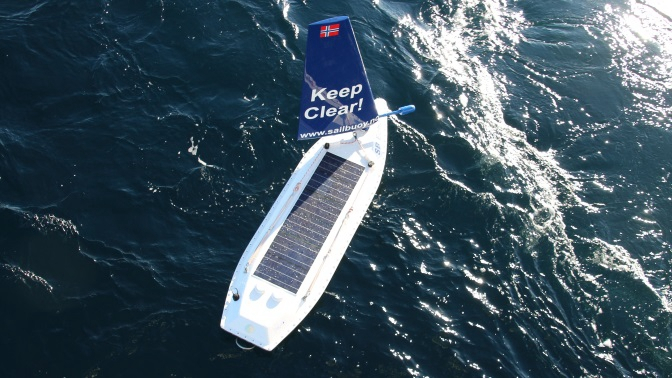
(Photo: CGTN)
All summer, the small boat drifted steadily eastward across the churning North Atlantic until it neared the Irish coast, where it made history by becoming the first unmanned sailboat to cross the Atlantic.
The SB Met, built by Norwegian company Offshore Sensing AS, reached the finish line of the Microtransat Challenge, a transatlantic race for autonomous robots on Aug. 26, two and a half months after setting off from Newfoundland, Canada, according to preliminary data.
It's a milestone that shows the technology for unmanned boats is robust enough to carry out extended missions that can dramatically cut costs for ocean research, border security, and surveillance in rough or remote waters.
They're part of wider efforts to develop autonomous marine vessels such as robotic ferries and cargo and container ships that could be operating by the end of the decade, outpacing attempts to commercialize self-driving cars.
"The North Atlantic is one of the toughest areas to cross, completing the challenge really proves that it's a long endurance vehicle for pretty much any condition the sea can throw at you," said David Peddie, CEO of Offshore Sensing, which created the oceangoing drones, known as Sailbuoys.
While self-driving cars have to contend with pedestrians and other traffic, autonomous boats face storms that bring fierce gales and high waves as well as numerous seaborne hazards.
More than 20 previous attempts by various teams to complete the Microtransat since it began in 2010 have ended in failure, with robot boats caught in fishing nets, retrieved by ships, or lost, according to the race website.
The company is in a niche field with few other players.
US startup Saildrone is building a fleet of seven-meter "unmanned surface vehicles" that can spend up to 12 months gathering ocean data.
Liquid Robotics, owned by Boeing, makes the Wave Glider, a research platform that uses wave rather than wind power for propulsion.
Bigger unmanned ships are coming, too, and the International Maritime Organization is reviewing the safety, security and environmental implications.
Sailbuoys can be fitted with sensors to measure waves, ocean salinity, and oxygen levels; echo sounders to look for fish eggs and larvae, or transmitters to communicate with undersea equipment. They sell for about 150,000 euros (175,000 US dollars), similar to the cost of renting a research vessel for a few days.
"We talk more about autonomous cars or drones, but sailboats are also a big thing," said Ulysse Vautier, of the Plymouth University team.
"There's so much to discover on the ocean. With the environmental and ecological problems we face today," autonomous sailing boats are an energy-efficient way to do ocean research, Vautier said, adding that future uses could include swarms of sailing drones scanning the sea floor for the missing Malaysian Airlines flight MH370.


